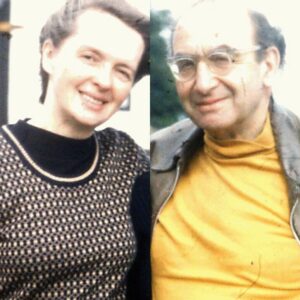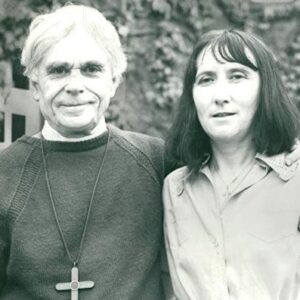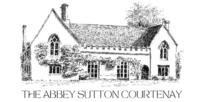 |
 |
| Arna & Fred Blum | Stephen & Sandra Verney |
Biography of Fred Johannes Blum 1914 – 1990
Fred Johannes Blum was born 1914 in Mannheim, Germany to a liberal, professional Jewish family. In the 1930s he went to study social sciences at the University of Geneva, Switzerland. By 1938, as a non-Aryan suffering much adversity, he could see no future in Hitler’s Third Reich and in 1939 he left his family behind, emigrating to the USA to undertake a Doctorate at the University of California and later becoming an American citizen. En route to the US he passed through London on the day that war was declared.
During the early years of the war the Quaker Society of Friends were supporting ‘enemy-alien’ refugees like himself and Fred, drawn to their quiet ways of worship, became a member of the Quakers, whilst maintaining his Jewish heritage.
In the 1940s many members of Fred’s family, including both parents, died in the Holocaust (his mother in the Auschwitz concentration camp). After the war Fred visited Auschwitz and when standing at the place where his mother had died,
“he knew that only Jesus the Jew could cope with that terrible darkness, both with the evil of the gas chamber and with the guilt in Fred’s own heart of having survived when others died”.
S Verney
It was this enlightenment that shaped Fred’s life’s work. He sought to understand non-violence; he envisioned better ways of living together for humanity; he studied and advised on work structures and conditions. He was always seeking ways to democracy, freedom, peace, growth, personal and community transformation.
He admired and was inspired by visionaries like Schweitzer, Saint Francis and (especially) Gandhi who all advocated and practised non-violence.
During the next twenty years in America, Fred’s personal and professional life were shaped by three questions:
- What does it mean to be human?
- How does consciousness develop in individuals and cultures?
- How do spirituality and ethics relate to everyday living? (A Blum)
Fred taught economics at Howard University in Washington DC and was a professor of social sciences in Michigan and Minnesota. The US Senate appointed Fred advisor to the Labor and Welfare Committee and he worked as a consultant for the young Senator John F Kennedy.
Professor Blum lead various sociological and psychosocial research projects.
1956 Fred was Associate Professor at the University of Minnesota (where he met his wife Arna).
1958 Fred and his family travelled on the Queen Mary to the UK.
1958 – 1963 Fred had sabbatical and teaching exchange arrangements in Europe.
1963 Fred resigned his US academic post and committed himself (and his family) to a future based in England. He developed his interest in Gandhi, with personal and professional associations with Gandhians in England and India (a country he visited many times) leading to the “Gandhi Interview Project” in the 1970s and early 80s.*
1958 – 1962 Fred trained as an analytical psychologist in London and began working with individual clients.
1967 Fred founded the charitable organisation “The New Era Centre”, developing his thinking and writing on spiritual aspects of social witness and action. He believed that “people of spiritual commitment from all faiths and none, must together be witness to ways of establishing a new era of truth and justice.” (New Era proposal 1967)
His home in Hertfordshire became a place for seminars and workshops that brought together supporters of his vision for healing communities.
In 1969 he met Stephen Verney at a conference in Coventry where Stephen was doing reconciliation work. They became friends (“like brothers”) and Stephen became a Trustee and significant supporter and contributor to the creation and work of The New Era Centre at The Abbey which began in 1979.
1979 onwards:
Fred’s vision of finding a physical base for the New Era Centre became a reality. The Abbey at Sutton Courtenay was bought and so began the hard work of raising funds and finding labour (often volunteers) for transforming a dilapidated, uninhabitable house into a place of healing. His dream was to have supporters and companions to create a community that lived as “cooperators with nature and each other”.
Fred continued his work with analytical clients, based at The Abbey. Some, such as members of L’Arche communities would stay at The Abbey whilst receiving analysis. Fred’s experience at Auschwitz had inspired in him not only a “professional empathy” but also compassion for all he encountered. He enabled people to be set free – even as he, himself was unable to be free.
1983 After a short period of living in The Abbey, Fred and Arna moved into 1 Abbey Cottages next to The Abbey.
1986 Fred decided to be baptised into the Anglican Church and a few months later he was ordained as priest.
1989 December, Fred had a severe stroke which deprived him of speech. He could not imagine a life without this expression and chose to eat nothing, dying in the beginning of January 1990.
All his life Fred was a traveller; both in his mind and geographically. He researched, described, listened, questioned, meditated. He loved all the arts, even studying with Oska Kokoschka in 1958.
Fred “had a special eye for colour, form and beauty.”
A Blum
Fred loved words – he was a prolific writer (publishing several books) and he built up a vast library of books (still housed at The Abbey) on all subjects and especially writings by Gandhi. He was a great believer in education. In the 1967 proposal for the New Era Centre he wrote:
…”we must develop a unified framework within which science, religion and the arts can be interrelated while each makes its own contribution to the quest for Truth.”
F J Blum
Fred was indefatigable in all he did; he has been described as “courageously stubborn” (Verney) in his belief and determination to bring The Abbey back to life – in applying for grants and finding people with the skills to build, administrate and steward the house and community that were created.
His legacy is immense.
*Six of these interviews were published in “Understanding Gandhi” (2011)
